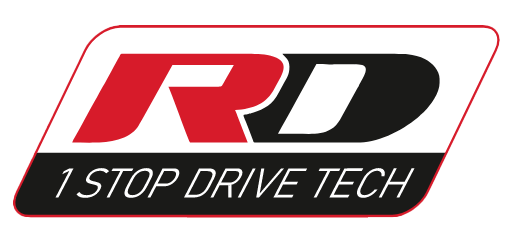
What Are the Best Car Lights for Night Visibility?
Night driving can be challenging, especially on Indian roads where poor visibility, unmarked roads, and unpredictable weather increase the risk of accidents. According to the Ministry of Road Transport and Highways, 42% of road accidents in India occur during low-light or night conditions, making proper car lighting a critical safety component.
Among various lighting solutions, fog lamps, headlights, and projector lamps play essential roles in improving night visibility. This blog will guide you through the types of car lights for night driving, focusing on fog lamps, comparing halogen, LED, and projector fog lamps, and helping you understand how to choose the best car lights for your vehicle.
Why Is Night Visibility Important?
Before diving into technical comparisons, here is why upgrading your car’s lighting system is essential:
-
Reduces accident risks by improving reaction time.
-
Helps in identifying road conditions, potholes, and obstructions.
-
Minimizes glare for oncoming traffic when adjusted correctly.
-
Reduces driver fatigue during long drives.
Understanding Fog Lamps
Fog lamps for cars are mounted lower on the vehicle’s front bumper, designed to cut through fog, rain, and dust by focusing light close to the road surface.
Key Characteristics:
-
Emit a wide, bar-shaped beam pattern.
-
Have a sharp cutoff to avoid reflecting light into the driver’s eyes during fog or heavy rain.
-
Used in conjunction with low beams, not as replacements for headlights.

Market Insights: Car Lighting Trends
-
The automotive lighting market in India is projected to grow at a CAGR of 8.5% (2024–2029) driven by LED and projector adoption.
-
A survey by Autocar India (2024) shows 58% of car owners are looking to upgrade their lighting systems for better night visibility.
-
Demand for LED fog lamps for cars has grown by 31% over the last two years.
Types of Fog Lamps: Halogen vs. LED vs. Projector Fog Lamps
1️⃣ Halogen Fog Lamps
Description:
Traditional bulbs using a tungsten filament, filled with halogen gas.
Advantages:
-
Low initial cost.
-
Easy availability and replacement.
-
Decent performance under mild fog conditions.
Limitations:
-
Lower brightness compared to LED/projector options.
-
Higher power consumption.
-
Shorter lifespan (~400–800 hours).
Ideal for:
Budget-conscious users who drive occasionally at night.
2️⃣ LED Fog Lamps
Description:
Use light-emitting diodes to provide a brighter, whiter light.
Advantages:
-
Up to 3X brighter than halogens.
-
Longer lifespan (~15,000–30,000 hours).
-
Lower power consumption (saves battery).
-
Clear white light improves visibility and aesthetic appeal.
Limitations:
-
Higher initial investment.
-
May require professional installation.
Ideal for:
Daily night drivers seeking efficiency and brightness.
3️⃣ Projector Fog Lamps
Description:
Use lenses to focus and direct light in a controlled beam pattern, available in halogen, HID, and LED variants.
Advantages:
-
Precise light distribution with minimal scatter.
-
Reduced glare for oncoming drivers.
-
Excellent performance in extreme weather and fog.
-
Enhances vehicle aesthetics.
Limitations:
-
Higher cost due to lens technology.
-
Complex installation requiring precise alignment.
Ideal for:
Users seeking the best fog lamp for car performance in heavy fog and long night drives.
Data Table: Comparing Fog Lamp Types
|
Feature |
Halogen Fog Lamp |
LED Fog Lamp |
Projector Fog Lamp |
|
Brightness (Lumens) |
700–1,200 lm |
1,800–3,000 lm |
2,500–3,500 lm |
|
Lifespan (Hours) |
400–800 |
15,000–30,000 |
20,000–30,000 |
|
Power Consumption |
High |
Low |
Medium-Low |
|
Price Range (INR per pair) |
₹500–₹1,200 |
₹1,500–₹4,500 |
₹2,500–₹6,500 |
|
Installation Complexity |
Easy |
Moderate |
Complex |
|
Weather Performance |
Good |
Very Good |
Excellent |
Choosing the Best Fog Lamp for Your Car
When selecting the best fog lamp for your car, consider:
✅ Driving Conditions:
If you frequently drive in fog-prone areas (like hilly regions), projector fog lamps will offer the best focused visibility.
✅ Budget:
Halogen lamps are budget-friendly, while LEDs and projectors are costlier but offer long-term savings on replacements and energy consumption.
✅ Ease of Installation:
Halogen fog lamps are easier to replace yourself, while LED and projector fog lamps may require professional fitting for optimal alignment.
✅ Aesthetic Preference:
LED and projector lamps offer a modern look with clear white light compared to the yellowish tint of halogens.
✅ Compatibility:
Always check your vehicle’s make and model before choosing a fog lamp for a seamless fit.
Additional Tips to Improve Night Driving Visibility
Apart from fog lamps, consider:
✔ Cleaning headlights and fog lamps regularly to avoid dust film reducing light output.
✔ Adjusting headlight aim to avoid blind spots and glare.
✔ Using anti-glare rear-view mirrors for night driving comfort.
✔ Regularly checking wiring and connections to prevent flickering issues.
Cost Analysis: Fog Lamp Price Breakdown
Based on 2024 online and offline market data:
-
Halogen fog lamp for car: ₹500–₹1,200 per pair
-
LED fog lamp for car: ₹1,500–₹4,500 per pair
-
Fog lamp projector kits: ₹2,500–₹6,500 per pair
While projector and LED fog lamps have higher upfront costs, they offer better visibility, longevity, and power efficiency, making them cost-effective in the long run.
Infographic-Friendly Insights
✅ Accident Reduction: Up to 37% reduction in night accidents with upgraded car lighting.
✅ Visibility Boost: LEDs offer up to 3x brightness compared to halogens.
✅ Market Trend: LED fog lamp adoption up by 31% in two years in India.
✅ Cost Over Time: LEDs last up to 40 times longer than halogens, reducing replacement cycles.
Conclusion
Investing in the right fog lamp for your car enhances your safety, driving comfort, and peace of mind during night drives. While halogens are budget-friendly, LED and projector fog lamps provide superior brightness, energy efficiency, and durability, making them the best car lights for night visibility for most modern drivers.
Whether you’re upgrading for aesthetics, safety, or functionality, understanding these differences will help you make informed choices for your vehicle’s lighting system.



